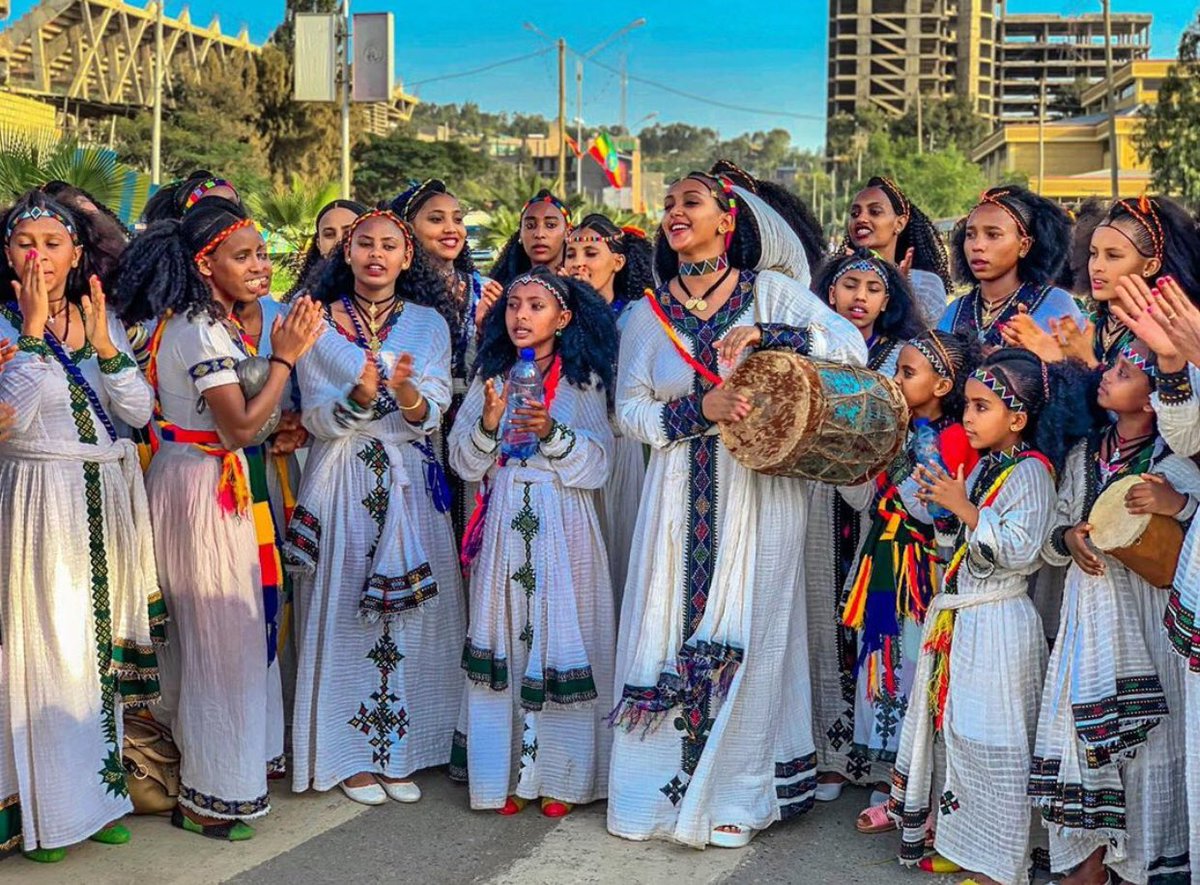Ethiopian Girls in the Northern Part of the Country Celebrating ‘Ashenda’ (Shadey, Ashendye, Solel) an Annual Girls’ Festival - ENA English
Ethiopian Girls in the Northern Part of the Country Celebrating ‘Ashenda’ (Shadey, Ashendye, Solel) an Annual Girls’ Festival

Addis Ababa, August 22, 2025 (ENA) -- The festival is primarily celebrated in the Tigray and Amhara regions of northern Ethiopia. It is commonly known as a girls' festival, as it highlights the role of young women and girls during the celebrations.
The event occurs in August, signifying the conclusion of a two-week fasting period called Filseta, which is observed by the Ethiopian Orthodox Tewahedo Church in honor of the Virgin Mary.
Typically, the festivities span several days, often lasting between three to five days, particularly in urban settings.
In preparation for the festival, girls and young women spend weeks getting ready. They don new, beautifully embroidered traditional cotton dresses.
They also style their hair in elaborate ways, such as braids, and adorn themselves with an array of jewelry, including necklaces, earrings, and bracelets.
The festival derives its name from a tall, green grass referred to as "ashenda." Girls weave this grass into bunches and wear it as a decorative accessory, often fashioned into skirts or worn on their backs. This grass represents vitality, growth, and a bond with nature.
In small groups, the girls visit homes within their communities, engaging in singing and dancing to traditional rhythms. They accompany their songs with small hand drums. They make their rounds to every household, performing songs of praise and gratitude for the families.
In exchange for their performances, the families they visit offer gifts, which may include money, food, or beverages. These gifts are regarded as a token of appreciation for the girls' entertainment and a means of supporting the community.
Ashenda carries profound cultural and religious importance. While it is deeply rooted in the Orthodox Christian tradition of honoring the Virgin Mary, it has evolved into a broader cultural celebration of femininity, resilience, and community.
The festival's collective nature nurtures a strong sense of sisterhood and communal identity.
Although the fundamental traditions are largely consistent, the festival is referred to by various names across different regions of northern Ethiopia. In Tigray, it is known as 'Ashenda', whereas in Amhara, specifically in the Lasta and Gonder regions, it is called 'Ashendeye', and in the Wag Himra and Sekota areas of the Amhara region, it is referred to as Shadey. Additionally, in the Raya-Kobo region of Amhara, it is recognized as Solel.
These regional designations underscore the festival's profound historical significance and its integration into local cultures, all while maintaining the overarching theme of honoring women.
As one of Ethiopia's many unique World Heritage sites, this celebration serves as a powerful magnet for tourists, drawing them in to experience its rich cultural tapestry firsthand.